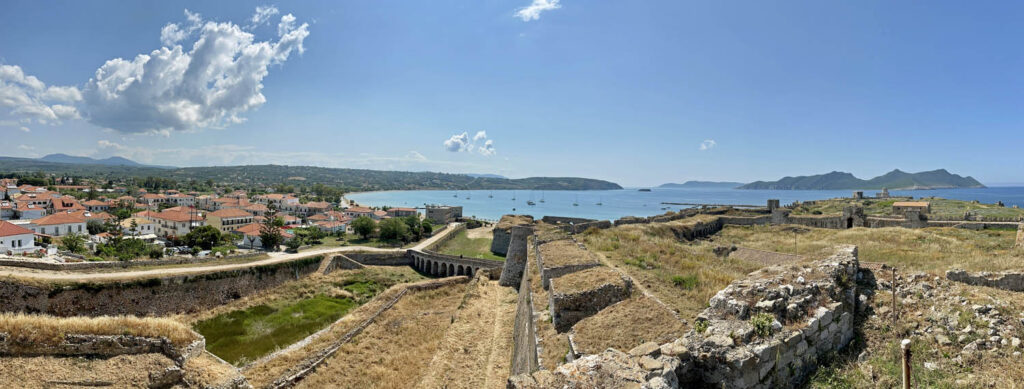
We’ve made it around the Peloponnese! Favourable (and strong) winds have blown most days for the past week, so we have taken every opportunity to keep moving, whilst still taking in some of the sights and delights of the region.
After Monemvasia, we headed south and spent nights at the tips of each of the three “fingers” of the Peloponnese that jut out into the Mediterranean. The first stop was a small port called Porto Kagio, where we dropped anchor. Later that evening we noticed a couple of guys from Ireland on a tiny 26 foot yacht – they seemed to be having trouble with their dingy, and eventually swan ashore for supper.
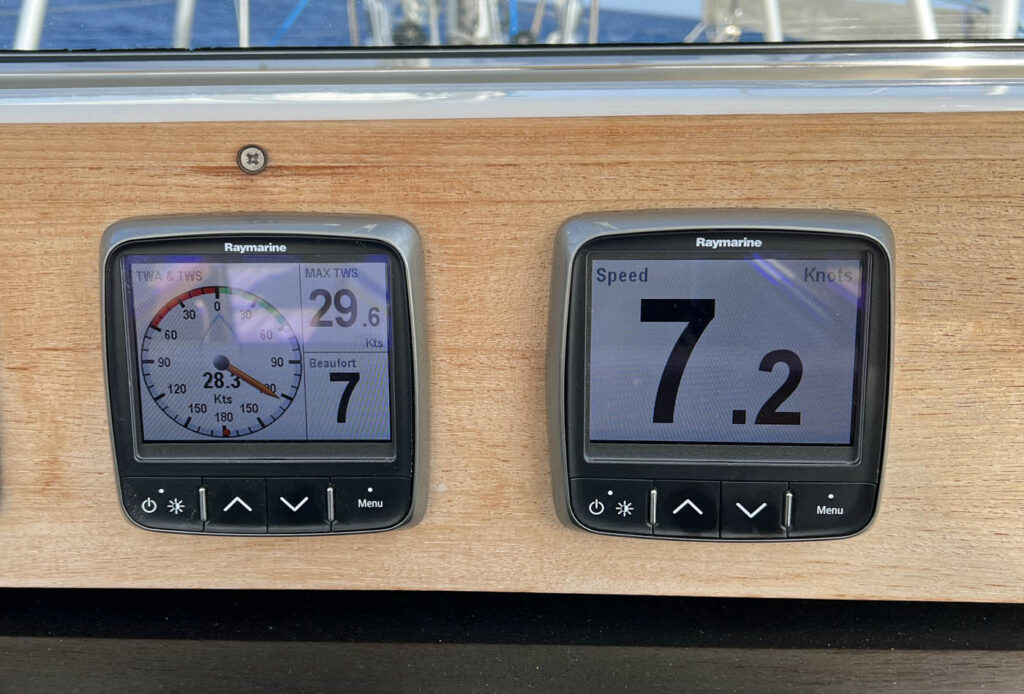
The sail the next day was exhilarating! Right from the start we encountered a steady force 5, which built to a force 6, gusting to 7 (that’s a near gale!), and with the wind on the beam we made great progress to the next port of Koroni. Lo and behold, the Irish guys arrived later – impressive sailing in such a tiny boat. Knowing the trouble they were having with their dinghy, we gave them a lift ashore and we ate together at a beachfront taverna whilst they entertained us with their sailing tales. They had sailed their boat all the way from Cork, entering the Med via the French canal system.
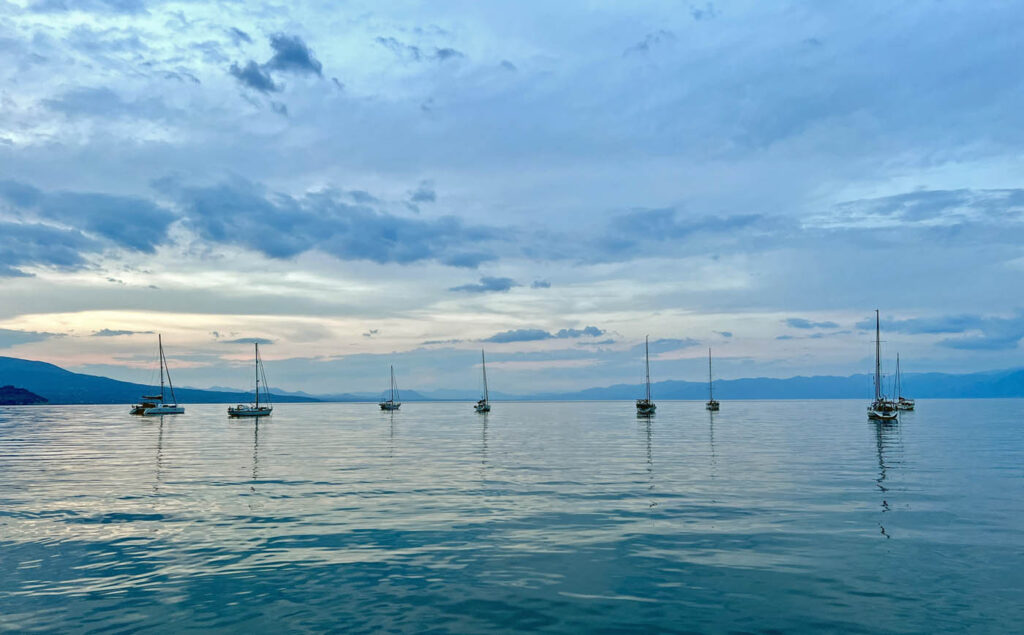
From Koroni we moved on, in lighter winds, to Methoni, with its amazing fort and castle. We spent an extra day there, giving us time to wander round the area. Methoni was an important staging point for trade and as a stop on route for pilgrims heading East, so the byzantine castle reflects the strategic importance of the place.
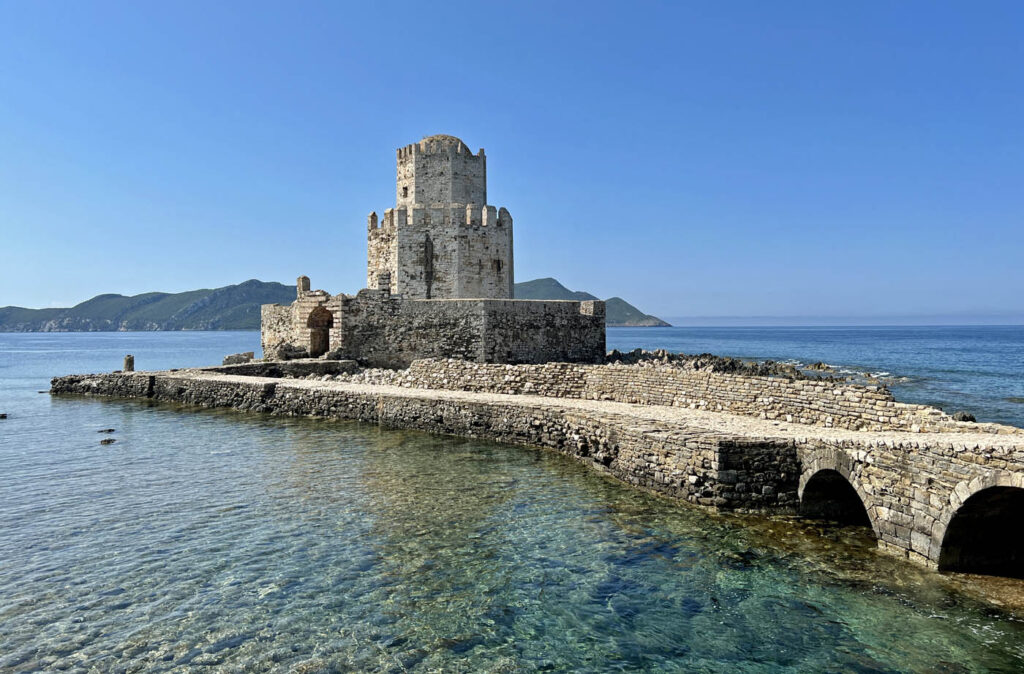
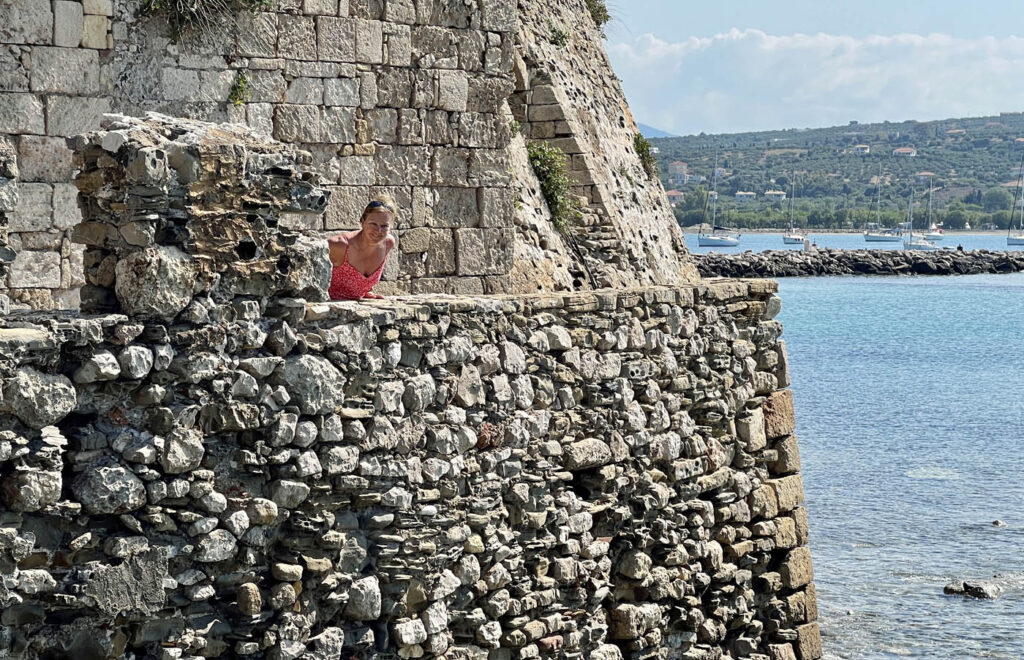
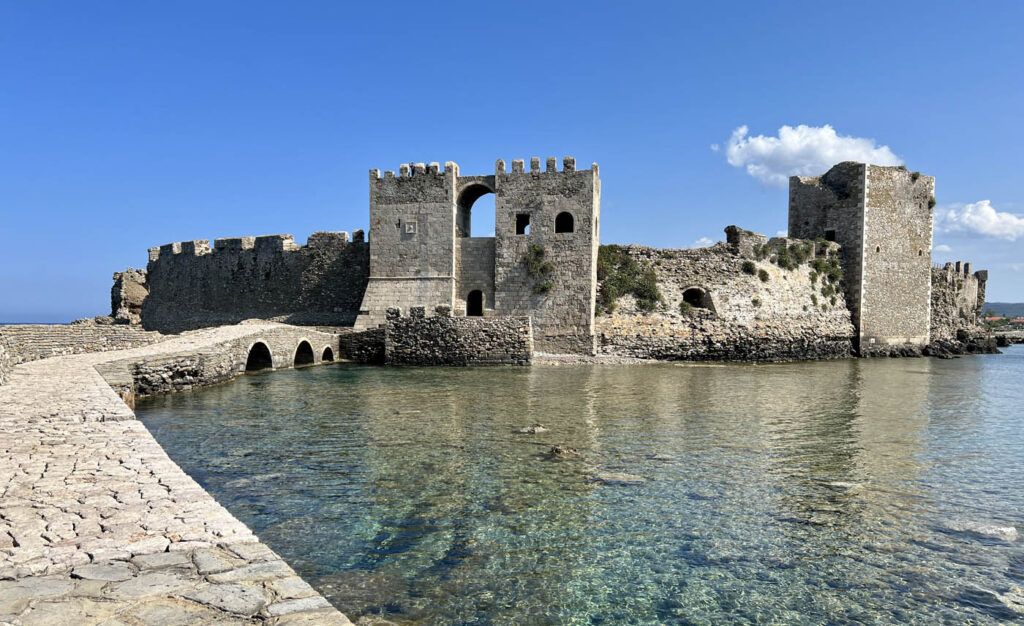
Our next stop was Kyparissia, a small town with a near deserted harbour. Typically, the wind whipped up as we entered the bay and we struggled to berth against a strong cross-wind. Abandoning the second attempt, we hauled up the anchor, only to find it had fouled on the anchor of a J boat – one of very few boats in the harbour. Fortunately, we had been towing the dinghy (a bad habit – we usually deflate and stow it on passage), and I was able to jump in the dinghy, tie alongside the bow and pull us free. A beer was definitely in order after that. Kyparrisia turned out to have its own population of turtles swimming in the harbour, who proved very elusive when it came to trying to get a photo..
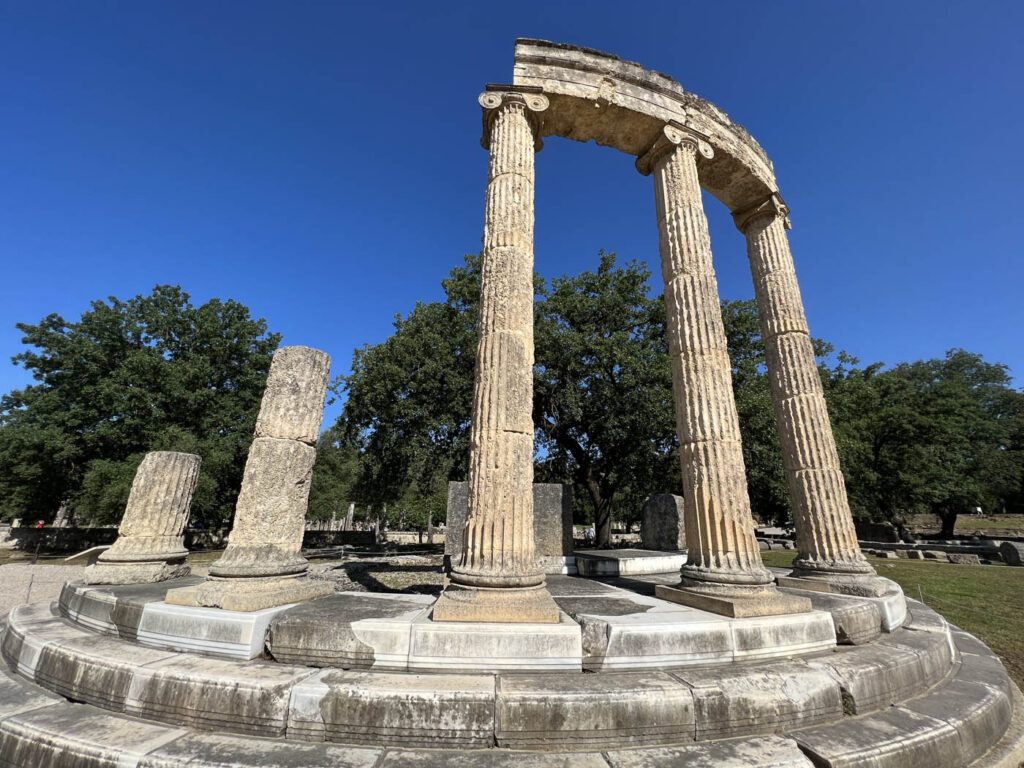
Moving on, we stopped in Katakolo. In itself, it is not the most inspiring of places, yet attracts huge cruise ships – two docked there when we were staying. This is because it is the closest point from the sea to visit Olympia, the original site of the Olympic Games. We duly made the pilgrimage, and it was worth it. The site covers many acres – really the size of a small city, with ruins that date from Neolithic times and since. Most impressive were the sites of the former temples, in particular the Temple of Zeus. Although a lot of restoration work has been done, much of it remains as old ruins; the twin effects of time and of earthquakes in the region in about 500AD.
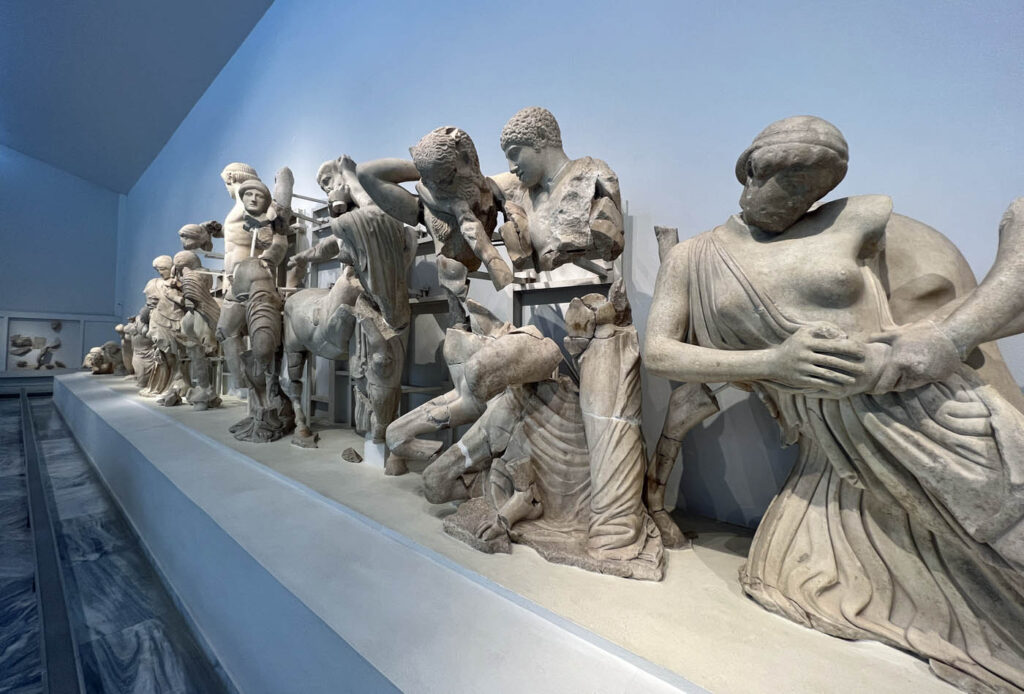
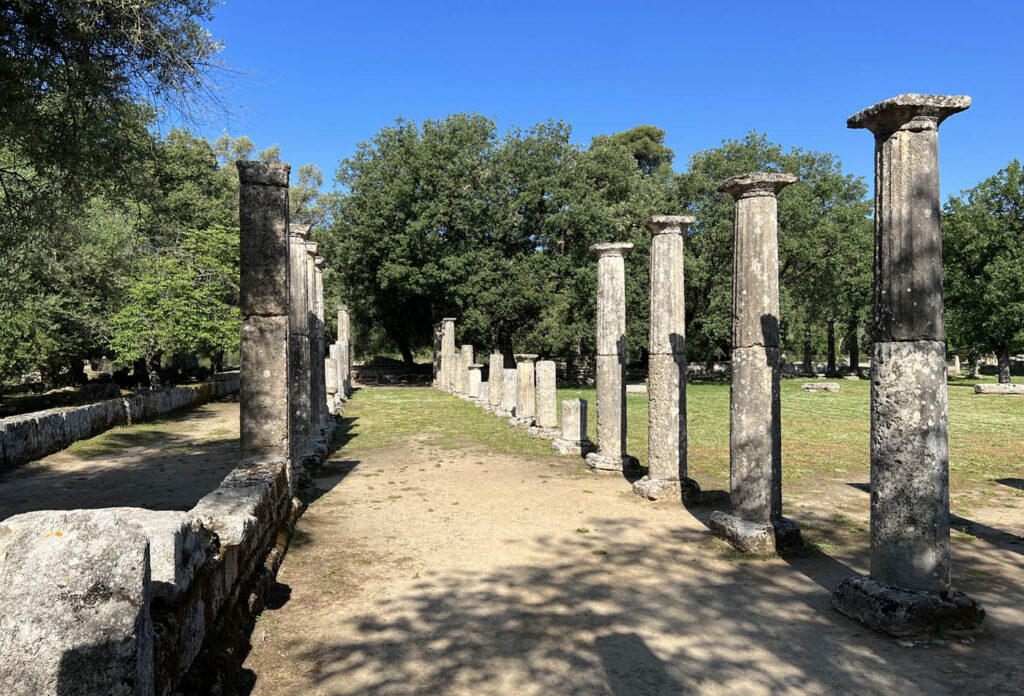
When we left Katakolo, we also left the Peloponnese, and crossed the Ionian Sea to Zakynthos, the most southerly of the Ionian islands. We have moored up against the quayside – a chance to restock the boat, charge the batteries, and get the faulty plumbing sorted out. A local mechanic called Ilias, who spoke almost no English, came aboard and, with the help of “Google Translate” we discussed the problem. He has now fitted a non-return valve into the cold water system. Hopefully our troubles are at an end!